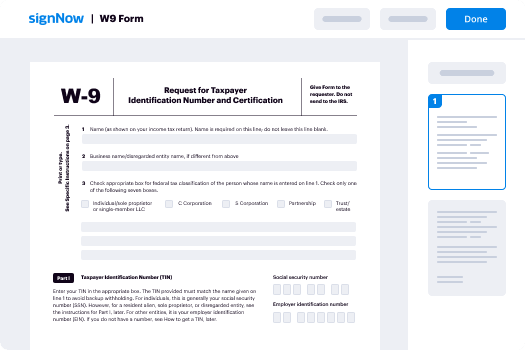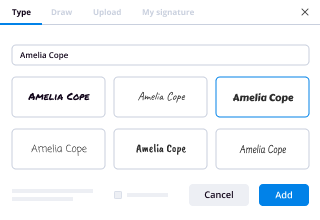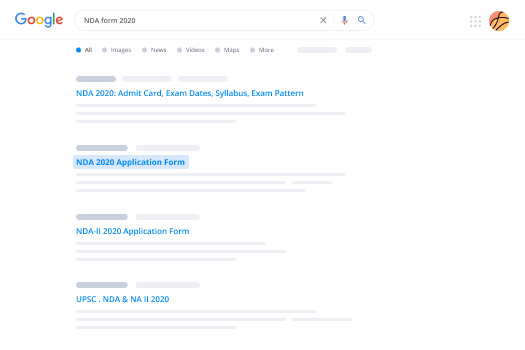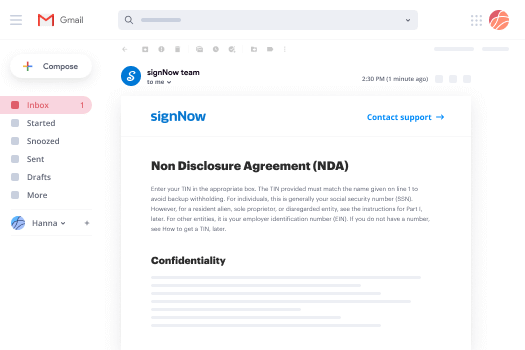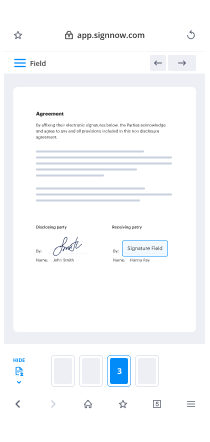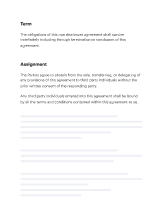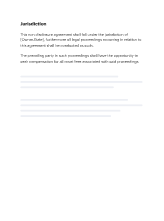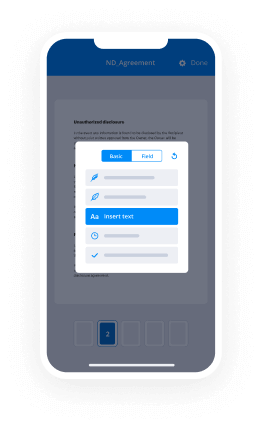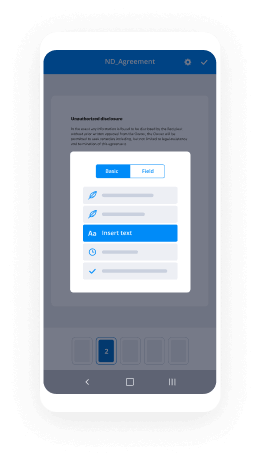- 1 - DELAWARE WILL INSTRUCTIONS U.S. Legal Forms, Inc. http://www.uslegalforms.com 1. This Will is designed to be completed on your computer. To do so, use
your mouse and click on each field which will be highlighted in gray. This will replace
the gray with the words you type. Example: _____________________________[1] will become JOHN DOE. If you ordered and received this Will in hard copy, you may also use these instructions
to complete the Will, leaving the reference numbers, and placing the names, etc you
desire next to the field numbers.2. The Will contains Articles which cover various matters. The information
below is designed to assist you in completing the fields contained in the articles of the
Will.3.Article / Field Completion Instructions.Field [1] -Your Name. Field [2] - Your Name.Field [3] -Your County of Residence. ARTICLE ONE This article allows you to specify your current marital status and to name all
children you may have and their date of birth. Field [4] - Double click proper box to select marital status.Fields [5-10] -Type the names and birth dates of all children, if
applicable. If you have no children, leave blank. ARTICLE THREE This article is for you to specify specific property to go to a specific person. If you
do not leave any, type none and delete the fields. Field [11] -Type Name.Field [12] -Address. Field [13] -Relationship. Field [14] -Describe the property to go to this person.Field [15] -Type Name.Field [16] -Address. Field [17] -Relationship. Field [18] -Describe the Property.
- 2 - Field [19] -Type Name.Field [20] -Type Address. Field [21] -Relationship. Field [22] -Describe the Property. Field [23] -Type Name. Field [24] -Type Address. Field [25] -Relationship. Field [26] -Describe the Property. ARTICLE FOUR This article is for you to leave your homestead, if you have one on the date of death to
persons designated. You may choose to bequest your homestead to your spouse, your
children, or allow your primary residence to pass under Article Five. Field [27] -Complete this field only if you want to leave your
homestead to your spouse. Remember to sign your
name under this provision if selected.Field [28-30] -Complete these fields only if you want to leave your homestead to your child(ren). Remember to sign your
name under this provision if selected.Field [31] -Complete this field only if you want to leave your homestead to another individual(s) other than your spouse or children or if you have no spouse or
children. Remember to sign your name under thisProvision if selected. Field [32] -Double click on this box to select this provision only if you want your primary residence to pass under Article
Five of this Will. Remember to sign your name under
this provision if selected. Note: If your home is jointly owned with another and held as joint tenants with
rights of survivorship, the home will pass to the survivor and will not be controlled by
your will. ARTICLE FIVE This article is for you to leave all the rest and remainder of your property and any
special items you listed in Article Three. This article gives you the following options as to
the disbursement of the remainder of your property: Bequest to child(ren), bequest to
spouse, bequest to another individual(s) or organization(s).
- 3 - Field [33-35] - Complete these fields only if you want the remainder
of your property to pass to your child(ren). Remember
to sign your name under this provision if selected.Field [36] -Complete this field only if you want the remainder of
your property to pass to your spouse. Remember to
sign your name under this provision if selected.Field [37] -Complete this field only if you want the remainder of
your property to pass to another individual(s) other
than your spouse or children or if you have no spouse
or children. Remember to sign your name under this
provision if selected. ARTICLE SIX This article concerns property which is to vest in a trustee for a minor beneficiary.
This section should be completed only if you have minor children. Field [38] -Enter age of minor beneficiary requiring the
assistance of a trustee. Field [39] -Enter age at which beneficiary will receive distribution
of trust principal and income.Field [40] -Enter age of beneficiary at which the named trustee is
required to distribute remaining trust property. Field [41] -Enter name of trustee.Field [42] -Enter name of alternative trustee.Field [43] -Enter name of guardian for minor children. ARTICLE SEVEN This article requires that you name a personal representative and a successor
personal representative. Field [44] -Enter name of your personal representative. Field [45]-Enter name of your successor personal
representative. ARTICLE TEN Article ten contains construction intentions and miscellaneous provisions. Be
sure to check the box appropriate box concerning whether you want to be deemed to
have died before or after your spouse in the event you die in a common disaster with
your spouse.
- 4 - All other blanks in the Will are typically completed by hand, such as the names of
the witnesses, day, month and year executed, etc.Once you have completed the Will, double-check all entries and then print. The
Will should be signed by you in front of two witnesses, not related to you. Please sign
all pages of the Will in the places designated. The self-proving affidavit is used to prove the Will and make the Will subject to
probate. If the affidavit is not completed now, someone will have to locate the
witnesses after your death and obtain an affidavit. Therefore, it is best to sign the Will in
the present of two witnesses AND a notary public so that the affidavit can be completed
by the Notary.You should keep your Will in a safe place once executed. It is also
recommended that you give a copy to your executor or other person as additional proof
of execution.
- 5 - ADDITIONAL INFORMATION ABOUT YOUR WILL FORM This section will briefly explain some of the articles of your will and provide other
information. Articles of the Will which are basically self-explanatory are not discussed
here. In addition, information which is already provided in the instructions above is not
repeated.First Paragraph: The first paragraph of the Will, provides your name,
residence information and provides that all prior Wills, if any, are revoked since you
have now made a new Will.Article Three: Some people have specific property that they desire to leave
to a specific person, such as a ring or antique. This Article is for you to leave such
property. You do not have to name specific property and may simply state none if no
property is to be left under this Article.Article Six: This Article is for you to name a Trustee for a minor
beneficiary. The person named should be an adult. Complete this section only if you
have minor children.Article Seven: This Article is for you to name a Personal Representative.
The person named should be an adult.Article Eight: If not waived, some Courts will require your Personal
Representative post a bond, and file an inventory, accounting and/or appraisal. All this
can be costly and time consuming. This Article states your intention that your Personal
Representative not be required to post a bond or file an inventory or accounting.Article Nine: This Article sets forth powers of your Personal Representative
and is designed to give broad powers without the requirement that Court approval be
sought for action by the Representative to the extent permitted by the laws of your
State.Article Ten: This article sets forth some legal construction intentions to
clarify some of the issues which may arise.
- 6 - BASIC INFORMATION What is a Will? A Will is a document which
provides who is to receive your property at death,
who will administer your estate, the appointment of
trustees and guardians, if applicable, and other
provisions.Who may make a Will? Generally, any person 18
years or older of sound mind may make a Will.
(Some states allow persons under 18 to make a
Will)What happens if I die without a Will? If you die
without a will you are an intestate. In such a case,
state laws govern who receives your property.
These laws are called "intestate succession laws".
If you die without a Will, the Court decides who will
administer your estate. Generally, it is more
expensive to administer an estate of a person who
died without a Will, than a person who dies with a
Will.GeneralWhen making a Will you need to consider who will
be named as your personal representative or
executor to administer your estate, who you will
name as guardian and trustee of minor children if
your spouse does not survive you and who will
receive your property. You should also consider tax
issues. The person appointed as executor or
administrator is often your spouse, but you should
also name an alternate, in case your spouse
predeceases you. The person you name should be
a person you can trust and who will get along with
the beneficiaries named in the Will. In the event your spouse predeceases you, the
guardian you name will have actual custody of your
minor children unless a court appoints someone
else. The trustee you appoint to administer a trust
you established would be in charge of the assets of
the trust for the benefit of the minor beneficiaries.Generally, a Will must be signed in the presence of
at least two witnesses (three for Vermont) who also
sign the Will. A notary public will also need to sign
if the Will contains a self-proving affidavit.
Generally, a self-proving affidavit allows the Will to
be admitted to probate without other evidence of
execution.Joint Property: Many people do not understand
that joint property may pass outside your Will and
also sometimes assume that it will pass through
their Will. They do not understand the significance
of joint ownership. The issue is common in the
following areas, provided as examples:(a)Real Estate: Often, a husband and wife
will own real estate as joint tenants with rights of
survivorship. If one party dies, the surviving party
receives the property regardless of what the Will
provides. This is common and generally
acceptable. However, if this is not your desire you
should change the ownership of the property to
tenants in common or other form of ownership. If
you own real estate as tenants in common, then
you may designate who will receive your share of
the property at your death. This issue can be a
problem when uninformed persons take title to real
estate as joint tenants with rights of survivorship but
really intended to leave their share to, for example,
children of a prior marriage.(b)Bank Accounts/Certificates of Deposit,
Stock, Retirement Plans, IRA’s and other type
Property: The same ownership as real
estate can be made of these investments. In fact,
many Banks routinely place Bank accounts and
Certificates of Deposit in the joint tenant with right
of survivorship form of ownership if more than one
person is on the account or CD, without advising
you of the consequence of same. In situations
where the persons are husband and wife and there
is no issue or concern over divorce or children from
previous marriages, this may be the best course of
action. However, with divorce on the rise,
premarital agreements and multiple marriages
being common, the parties may be doing something
that was not their intent. Another common
problematic situation is if a parent has more than
one child but only one child resides in the
hometown of the parent. The parent may place the
name of the child who resides there on all accounts,
CD’s and other investments for convenience
reasons and establish a joint tenant with right of
survivorship situation without realizing that only that
child will be entitled to those assets at the parent’s
death. Simply put, you should be aware when you
acquire an asset or investment exactly how it is
titled.
- 7- For additional information, see the Law Summary and Information and Preview links in
the search results for this form. A Definitions section is also linked on the Information
and Preview page. DISCLAIMER/LICENSE/LIABILITY LIMITATION All forms in this package are provided without any warranty, express or implied, as
to their legal effect and completeness. Please use at your own risk. If you have a
serious legal problem we suggest that you consult an attorney. U.S. Legal Forms,
Inc. does not provide legal advice. The products offered by U.S. Legal Forms
(USLF) are not a substitute for the advice of an attorney.
Signed by Testator/Testatrix: __________________________________- 1 - LAST WILL AND TESTAMENT OF________________________[1] BE IT KNOWN THIS DAY THAT,I, _____________________________[2], of _________________________[3] County,
Delaware, being of legal age and of sound and disposing mind and memory, and not acting
under duress, menace, fraud, or undue influence of any person, do make, declare and publish
this to be my Will and hereby revoke any Will or Codicil I may have made. ARTICLE ONE Marriage and Children (Double click box to select and mark as checked) [Field 4] I am:(a) Single (not married) with no children (b) Single (not married) with minor children. (c) Married with no children. (d) Married with minor children. (e) Married with adult children. (f) Other: __________________ If I have children, their names and date of birth are:Name: _______________________________[5] Date of Birth: __________________[6]Name: _______________________________[7] Date of Birth: __________________[8] Name: _______________________________[9] Date of Birth: __________________[10] ARTICLE TWO Debts and Expenses I direct my Personal Representative to pay all costs and expenses of my last illness and funeral
expenses. I further direct my Personal Representative to pay all of my just debts that may be
probated, registered and allowed against my estate. However, this provision shall not extend
the statute of limitations for the payment of debts, or enlarge upon my legal obligation or any
statutory duty of my Personal Representative to pay debts. ARTICLE THREE Specific Bequests of Real and/or Personal Property I will, give and bequeath unto the persons named below, if he or she survives me, theProperty described below:
Signed by Testator/Testatrix: __________________________________- 2 -Name/Address/RelationshipProperty Description[11][12][13][14][15][16][17][18][19][20][21][22][23][24][25][26][LIST OR STATE NO PROPERTY LEFT UNDER THIS ARTICLE]In the event I name a person in this Article and said person predeceases me, the bequest to
such person shall lapse and the property shall pass under the other provisions of this Will. In
the event that I do not possess or own any property listed above on the date of my death, the
bequest of that property shall lapse. ARTICLE FOUR Homestead or Primary Residence I will, devise and bequeath all my interest in my homestead or primary residence, if I own a
homestead or primary residence on the date of my death that passes through this Will, to my
spouse, _____________________________[27] , if he or she survives me. If he or she does
not survive me, then my homestead or primary residence shall pass under the residuary clause
of this Will. Sign if Selected: _______________________________ OR I Will, devise and bequeath all my interest in my homestead or primary residence, if I own a
homestead or primary residence on the date of my death that passes through this Will, to my
children, _____________________________[28] and _____________________________[29]
and _____________________________[30] , equally, per stirpes. Sign if Selected: _______________________________.OR I devise and bequeath all my interest in my homestead to: ______________________[31] Sign if Selected: _______________________________.OR My Primary residence shall pass under Article Five. [Field 32] Sign if Selected: _______________________________.
Signed by Testator/Testatrix: __________________________________- 3 - ARTICLE FIVE All Other Property of Every Kind I will, devise, bequeath and give all of my property and estate of every kind and
character, including, but not limited to, real and personal property in which I may have an
interest at the date of my death and which is not otherwise effectively disposed of as follows:(a) To my children _____________________________[33] and
_____________________________[34] and
_____________________________[35], equally, per stirpes. If one of my
children shall predecease me, then the equal share set apart for that
deceased child shall instead be distributed to his or her descendants, per
stirpes. If one of my children shall predecease me leaving no descendants
surviving, then the equal share set apart for that deceased child shall instead
be distributed to my other child, or if that child has also predeceased me, then
to his or her descendants, per stirpes. Sign if Selected: _______________________________. (b) To my spouse, _____________________________[36] . Sign if Selected: _______________________________. (c ) To _____________________________[37] Sign if Selected: _______________________________. ARTICLE SIX Property To Vest In Trustee for Child Beneficiary (Complete only if you have minor children) If I have children and any of my children are under the age of ______[38] years of age on the
date of my death, then I direct that my Personal Representative shall transfer, assign and
deliver over to my Trustee, named below, such beneficiary’s share of my estate and the objects
of property described herein. I direct my Trustee to hold said Beneficiaries share of my estate
and administer the assets of the Trust for the use and benefit of the Beneficiaries for the
purpose of providing for their health, education and general welfare in accordance with their
accustomed standard of living as much as is possible, considering the value of the Trust
property and their other sources of income. The Trustee, may in his or her discretion, distribute
to or for the benefit of the named Beneficiaries, such portions of the income and principal of the
Trust as he or she in his or her sole discretion shall determine to be necessary to accomplish
the purposes of this Trust. The Trustee may make such distributions as often or as seldom as
he or she may determine in his or her sole discretion without the necessity of any court authority
or approval, this being a private trust. As each Beneficiary herein reaches the age of
______[39] years, the Trustee shall distribute to said beneficiary his or her share of the trust
Signed by Testator/Testatrix: __________________________________- 4 -principal and income as of the distribution date. When the youngest Beneficiary reaches the age
of ______[40] years, the Trustee shall distribute all of the remaining Trust property including
principal and accumulated income to the Beneficiary and this Trust shall terminate. In making
said distributions, the Trustee may make distributions in kind and shall have the sole discretion
as to valuation of the Trust property in determining and apportioning distributions among the
Beneficiaries.I appoint ______________________[41], or if the appointee fails to qualify or cease to act, I
appoint ______________________[42], as Trustee of the Trust provisions of this Will to serve
in said capacity with all the powers during the administration of the Trust as are granted to
Trustees under Delaware law including the power to sell any of the real or personal property of
the Trust for cash or on credit or to mortgage it or to lease it, all to be exercised without Court
order. The Trustee named herein shall also have all powers as are granted to my Personal
Representative under the provisions of this Will during the administration of this private Trust.In the event that there is need for a guardian for my minor children, if any, I appoint
______________________[43], as Guardian of said minor children.Neither the principal nor the income of any Trust provision contained in this Will nor any part of
same shall be liable for the debts of any Beneficiary hereunder, nor shall the same be subject to
seizure by any Creditor of any Beneficiary, and no Beneficiary therein shall have any power to
sell, assign, transfer, encumber, or in any manner to anticipate or dispose of his or her interest
in the Trust fund, nor any part of same nor the income produced from said fund nor any part of
same. ARTICLE SEVEN Appointment of Personal Representative, Executor or Executrix I hereby appoint ______________________[44], as Personal Representative of my estate and
this Will. In the event my Personal Representative shall predecease me, or, for any reason,
shall fail to qualify or cease to act as my Personal Representative, then I hereby appoint
______________________[45] to serve as successor Personal Representative of my estate
and Will. The term “Personal Representative”, as used in this Will, shall be deemed to mean and include
“Personal Representative”, “Executor” or “Executrix”. ARTICLE EIGHT Waiver of Bond, Inventory, Accounting, Reporting and Approval My Personal Representative and successor Personal Representative shall serve without any
bond, and I hereby waive the necessity of preparing or filing any inventory, accounting,
appraisal, reporting, approvals or final appraisement of my estate. ARTICLE NINE Powers of Personal Representative, Executor and Executrix
Signed by Testator/Testatrix: __________________________________- 5 -I direct that my Personal Representative shall have broad discretion in the administration
of my Estate, without the necessity of Court approval. I grant unto my Personal Representative,
all powers that are allowed to be exercised by Personal Representatives by the laws of the
State of Delaware, including, but not limited to, any "Uniform Trustees' Powers Law," and/or
“Probate Code” adopted by the State of Delaware. All authorities and powers granted unto my Personal Representative shall be exercised
from time to time in her or his sole and absolute discretion and without prior authority or
approval of any Court, and I intend that such powers be construed in the broadest possible
extent. ARTICLE TEN Construction Intentions and Misc. Provisions It is my intent that this Will be interpreted according to the following provisions:1.The masculine gender shall be deemed to include the feminine as well as the
neuter, and vice versa, as to each of them; the singular shall be deemed to include the plural,
and vice versa. 2. The term “testator” as used herein is deemed to include me as Testator or
Testatrix. 3. This Will is not a result of a contract between myself and any beneficiary,
fiduciary or third party and I may revoke this Will at any time. 4. If I am married, then, in the event I die in a common disaster with my spouse, I
direct that I be deemed to have
died before died after, my spouse.
5. If any part of this Will shall be declared invalid, illegal, or inoperative for any
reason, it is my expressed intent that the remaining parts shall be effective and fully operative
and it is my intent that any Court so interpreting same construct this Will and any provision in
favor of survival.I direct that this Will and the construction thereof shall be governed by the Laws of the State of
Delaware.I, ______________________, having signed this Will in the presence of
______________________ and ______________________ who attested it at my request on
this the ______ day of ______, 20______at _____________________________ (address),
declare this to be my Last Will and Testament. ________________________________Testator/Testatrix
Signed by Testator/Testatrix: __________________________________- 6 -The above and foregoing Will of _____________________________ (name of testator/testatrix)
was declared by _____________________________ (name of testator/testatrix) in our view
and presence to be his/her Will and was signed and subscribed by the said
_____________________________ (name of testator/testatrix) in our view and presence and at
his/her request and in the view and presence of _____________________________ (name of
testator/testatrix) and in the view and presence of each other, we, the undersigned, witnessed
and attested the due execution of the Will of _____________________________ (name of
testator/testatrix)on this the ______ day of ______ , 20____._____________________________________ __________________________________________Witness Signature Witness SignaturePrint Name: ______________________________ Print Name: _________________________________Address: ________________________________ Address:
____________________________________________________________________________ ___________________________________________Telephone No. ___________________________ Telephone No.
_______________________________
Signed by Testator/Testatrix: __________________________________- 7 - CERTIFICATE STATE OF DELAWARECOUNTY OF ____________Before me, the subscriber, on this day personally appeared, ___________________________,
______________________________ and ________________________________, known to
me to be the testator/testatrix and the witnesses, respectively, whose names are signed to the
attached or foregoing instrument and all of these persons being by me first duly sworn,
____________________________ the testator/testatrix, declared to me and to the witnesses in
my presence that the instrument is the testator/testatrix’s last will and that he or she had
willingly signed it, and that the testator/testatrix executed it as a free and voluntary act for the
purposes therein expressed; and each of the witnesses stated to me, in the presence of the
testator/testatrix, that the witnesses signed the will as witness and that to the best of the
witness’ knowledge the testator/testatrix was eighteen years of age or over, of sound mind and
under no constraint or undue influence. ____________________________ Testator/Testatrix Typed Name: ____________________________ ____________________________ Witness ____________________________ WitnessSubscribed, sworn and acknowledged before me by _____________________________ , the
testator/testatrix, subscribed and sworn before me by _____________________________ , and
__________________________ witnesses, this _______ day of _______________,20 __ A.D.(SEAL) (SIGNED) ____________________________ (OFFICIAL CAPACITY OF OFFICER)


